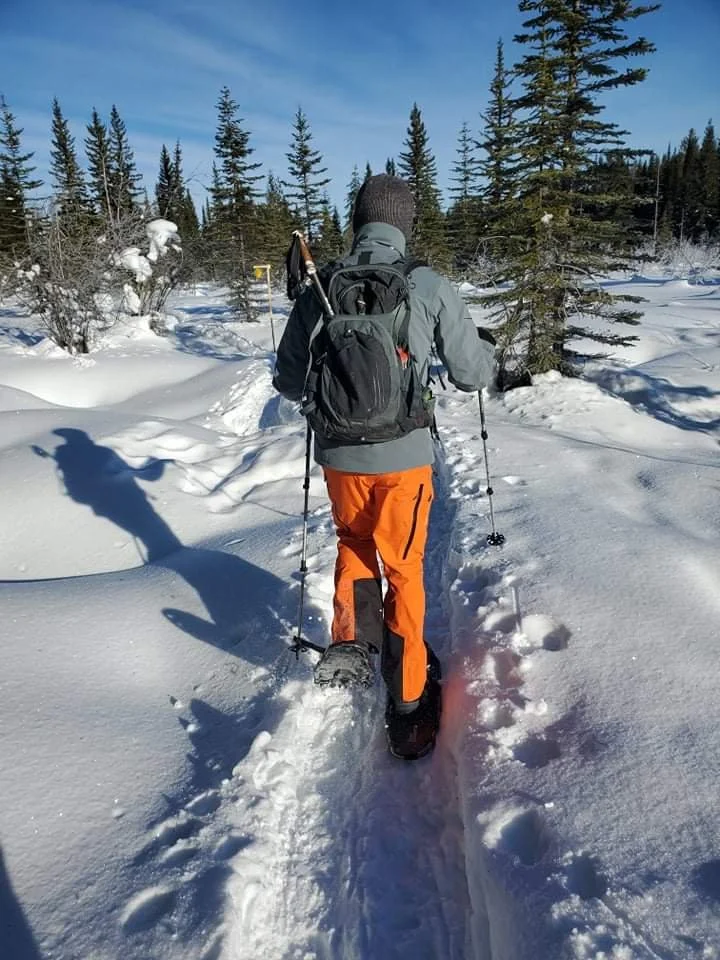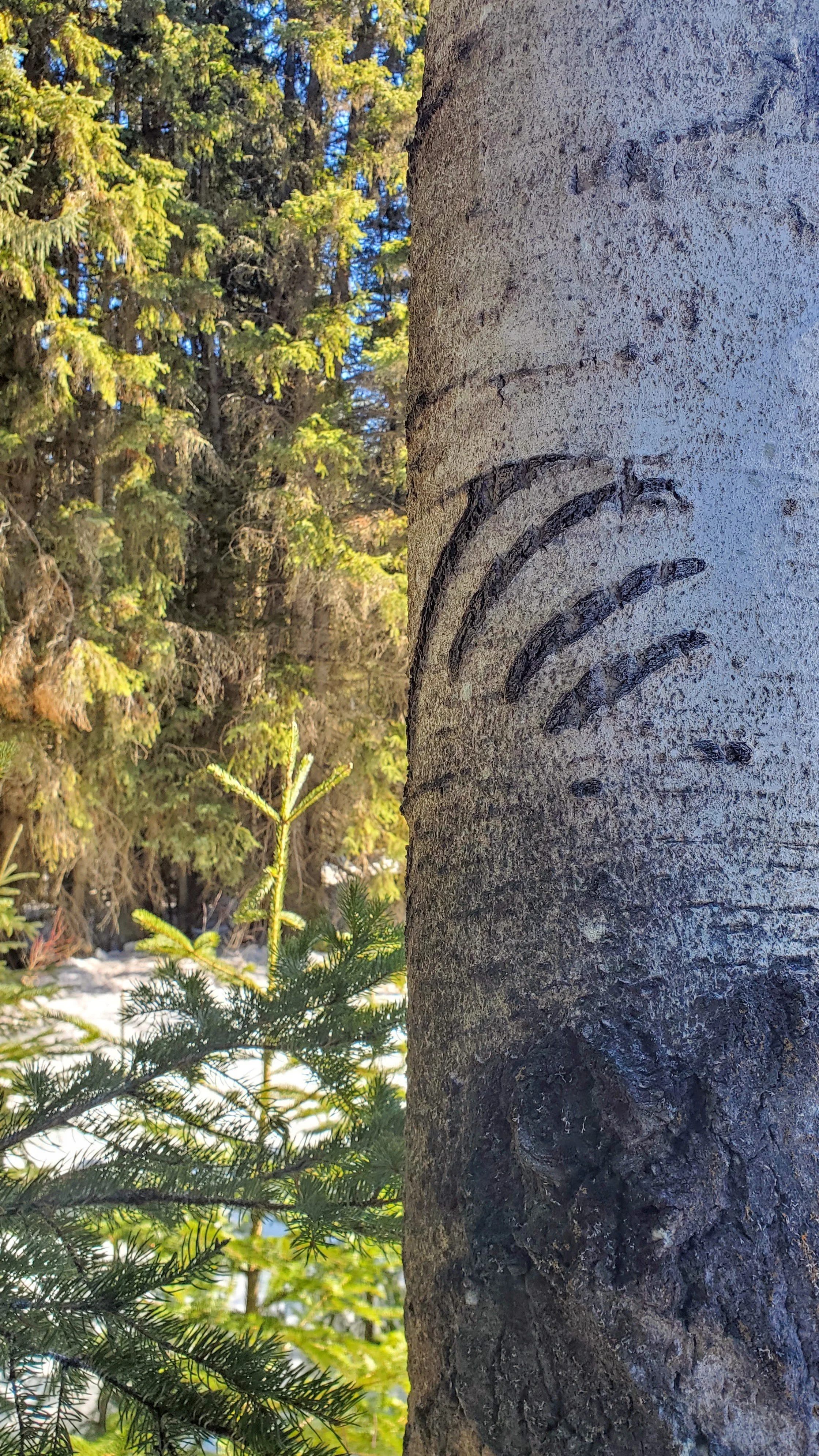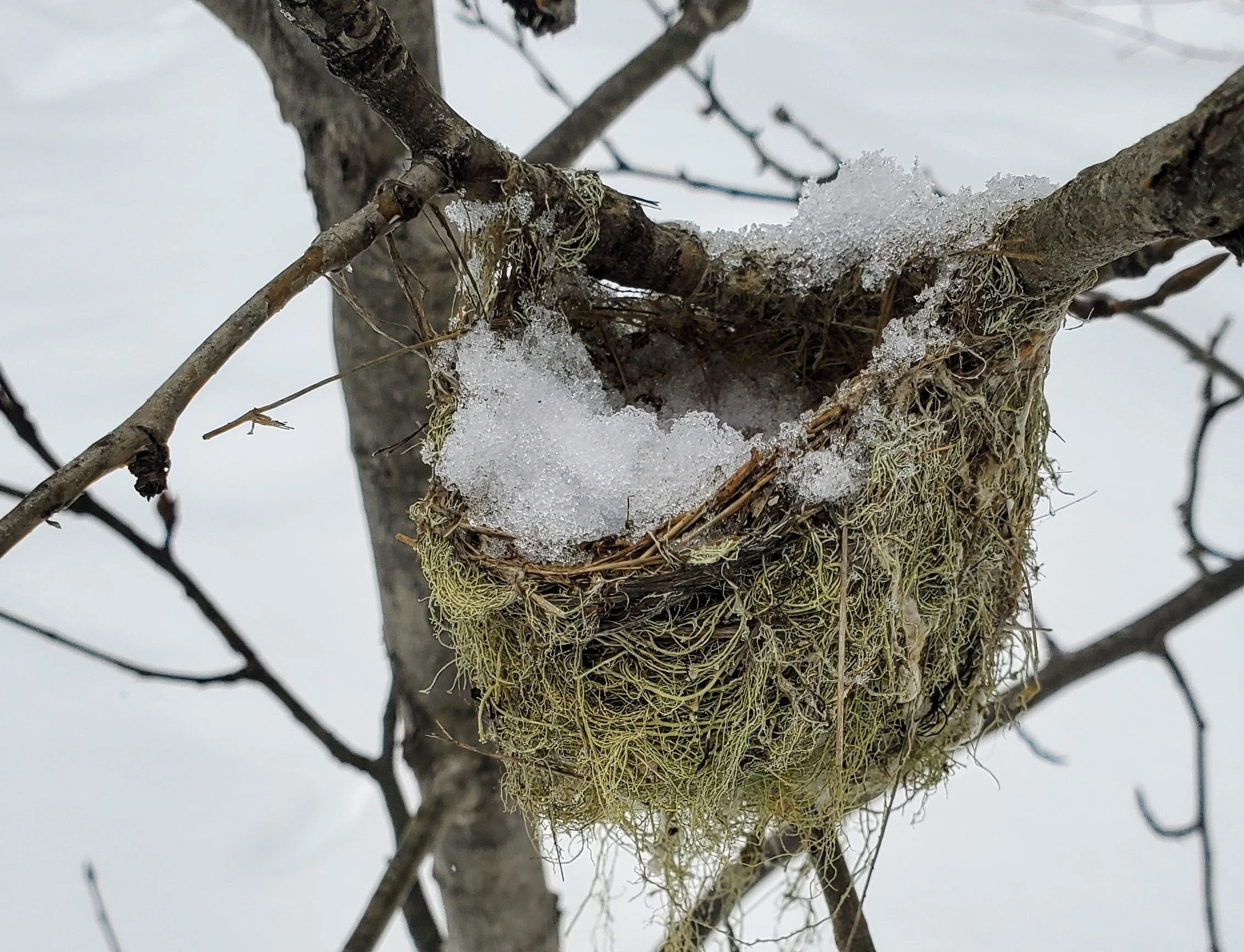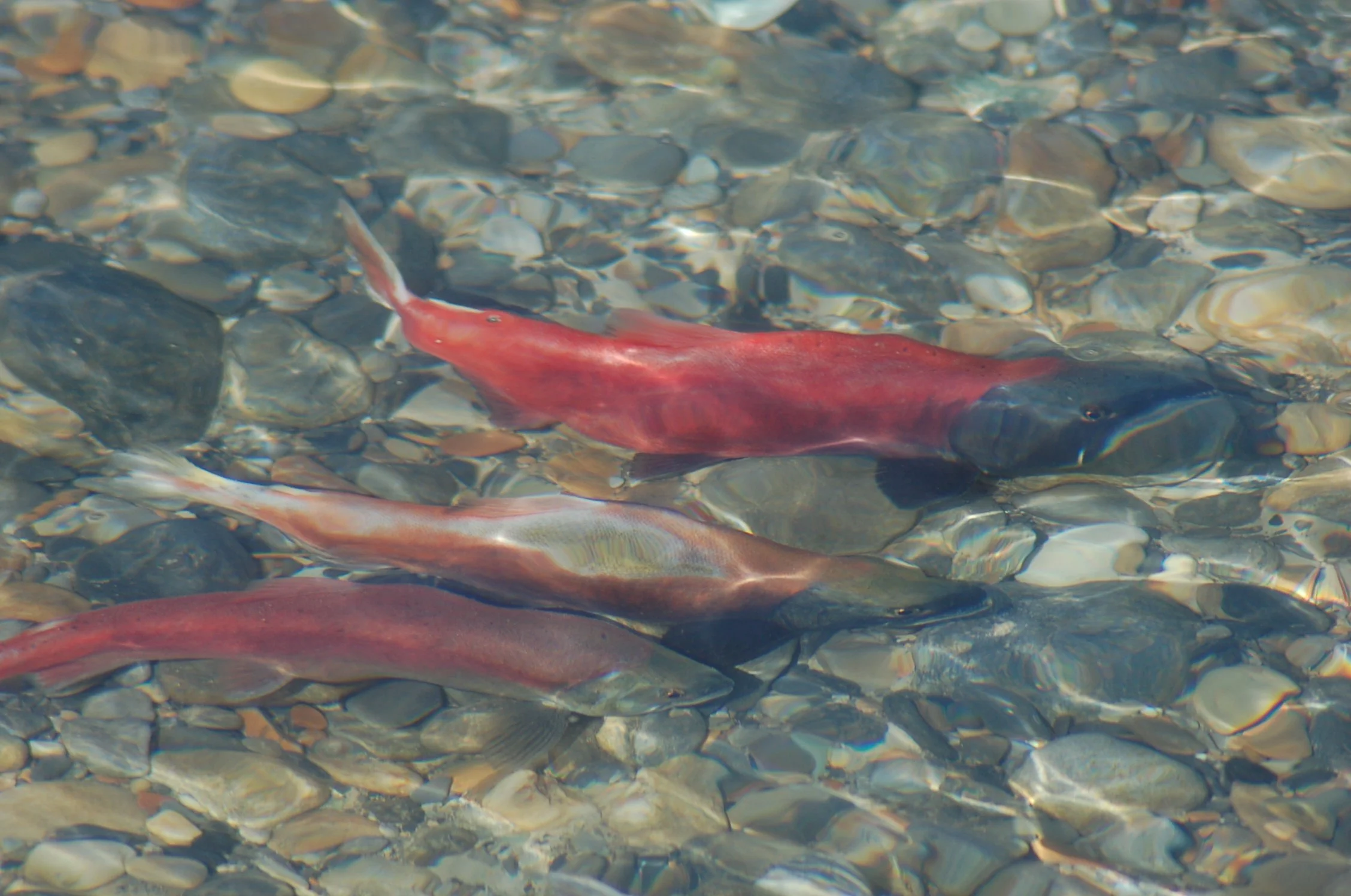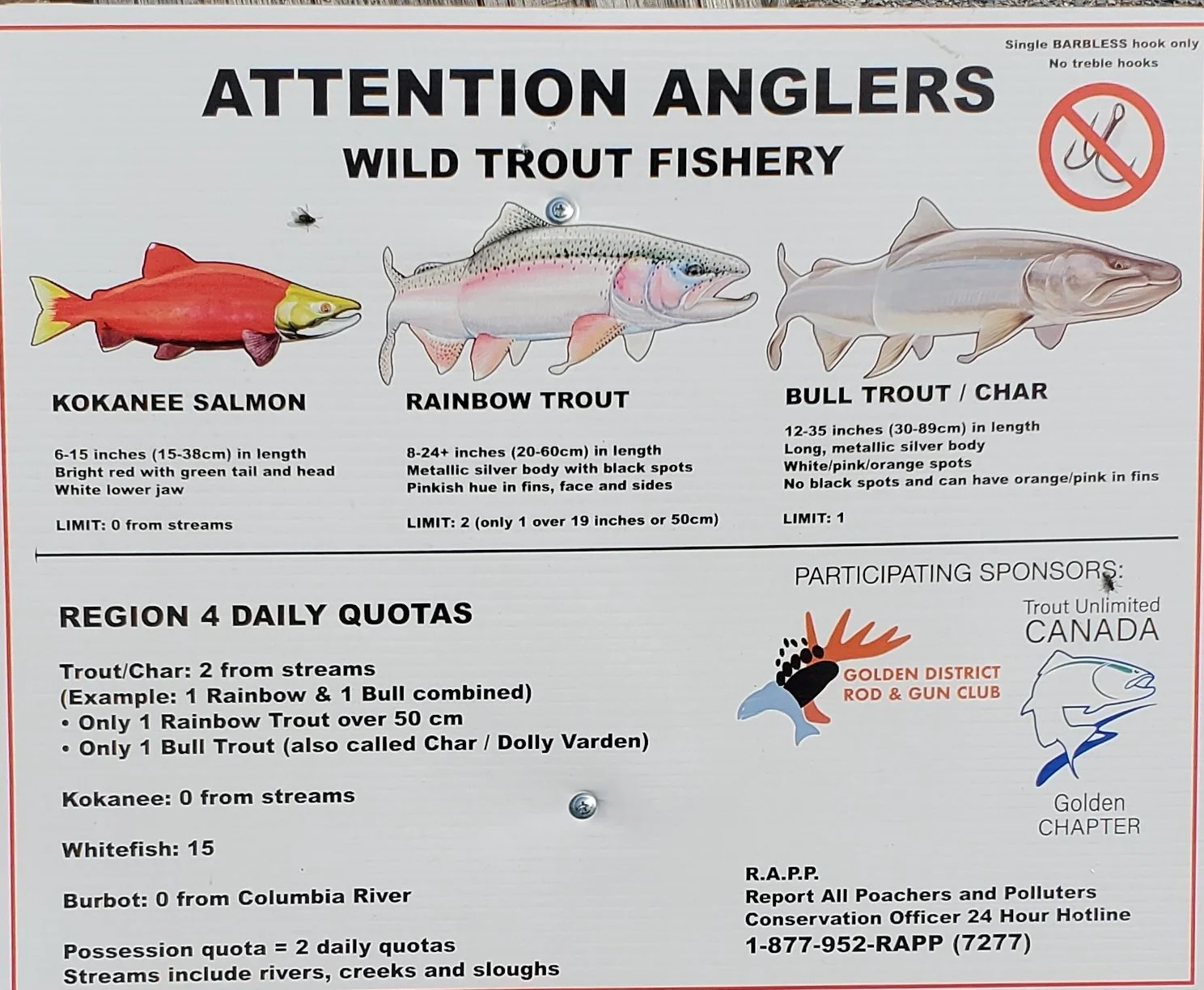Leading the snowshoe tour on a fantastically gorgeous February day.
It was early February when I received an email in my inbox inquiring about any volunteers who would be willing to lead a guided forest snowshoe tour at the Nordic Center for the Métis Nation Columbia River Society. Wanting to get involved with a local conservation non-profit (Wildsight), I threw my name into the wind and let them know that I would be willing to lead that tour. Shortly thereafter I was thanked for volunteering to lead the tour, but as an unknown person who would be representing Wildsight, they needed to be sure I was up to the task.
I “Interviewed” for the position, perhaps not an interview at all really, but a pointed conversation about my relevant background. My background in fire ecology, forestry, and having guided bear tours in Alaska set me up fairly well for the task. After I took that phone call in the blustery winds of a Canadian winter, I was the one chosen to lead the tour.
A couple of days before the tour I started preparing a more in-depth walking presentation. Reviewing my plant ID books, specifically the trees because they were the primary vegetation visible above the hefty winter snows. As I regathered fun facts and tidbits of information, I began to think of who I would be guiding. The Métis Nation Columbia River Society. Wait…Why am I getting to guide these folks? Should I be the one teaching Métis folks about the ecology of the local landscape?
For those of you who may not know, the Métis are of mixed European and Indigenous ancestry.
My thoughts, of course, cascaded and began racing. Do I really have the appropriate knowledge to be teaching Indigenous people about The Land? As a white person, shouldn’t I be learning from Indigenous people about The Land? Self-doubting rhetoric circulated around my mind.
On the day of the tour, I woke up feeling nervous. The sense of Imposter Syndrome shrouded my mind.
What if what I was taught is wrong? Am I really qualified to be doing this?
With the tour beginning in a couple of hours, there was no room for escape. I was locked into an agreement.
While arriving into the small snow-covered parking lot, a group of 8 or so folks could be seen standing around with snowshoes. They were MY group. 8 people, not so bad. Soon enough there were more and by the time we were all circled, a dozen eager learners stood before me.
We introduced ourselves going around the circle, one by one. I was the last to introduce myself, and at the end of my introduction, squeaked in that I was the guide for the walk. Introductions were followed by a stretch and a smudge, incorporating a prayer in the local Métis dialect. Most people there were locals and simply wanted to go on a snowshoe tour to learn more about the surrounding ecosystem.
My worries were irrelevant. Produced from nothing but the absence of confidence and the creation of assumptions.
As an unorganized bunch, we sauntered with our oversized feet to the head of the packed-in snowshoe trail. Before entering the forest in a single file line, I announced and encouraged everyone to ask a question if they had any and that I would do my best to answer. Everyone gave a nod. We were off.
The claw mark of a bear scars the trunk of a Quaking Aspen.
As the tour progressed, I became much more comfortable and relaxed with myself and the group. Eventually, I felt as if I were on any other hike, pointing out the catkins on the red alder, or the galls that punctuated the tips of the spruce. I was enjoying myself. I was also enjoying teaching people about the local ecology, the forest, what I love.
I lost track of time and distance, pointing out the unique features of various tree species. A quick glance at my watch and we were an hour and a half into a two-hour tour, but in terms of distance, 25% complete. Ensuing a prompt discussion, we took a shortcut, increasing our pace over the undulating terrain.
The snowshoe tour was complete, we arrived at the hut near the beginning of the trail. A casual afternoon picnic of bannock, smoked trout, and labrador tea in the February sun allowed us to interact as a group once again. People thanked me for being their guide as we discussed my background more in-depth and shared stories.
A residual birds nest enduring the winter.
I had never felt Imposter Syndrome before this day. I questioned myself, my knowledge, and my abilities. It cast a real doubt over me. I think it may be rooted in the fact that it has been a while since I had given a tour, or brushed up on my botanical knowledge. I was naturally nervous about my qualifications. In the end, everything turned out just fine, in fact, it was a lot of fun!
The snowshoe tour was followed by another on February 28th which also went very well, in fact, some folks from the first tour came again and brought friends! The best part? Not an inkling of imposter syndrome was about.
